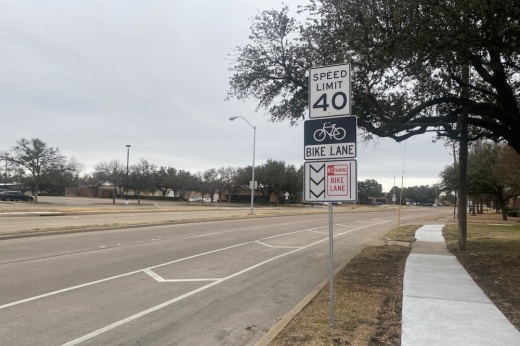“Richardson’s active transportation initiatives will generate an environment for walking, bicycling and using assisted-mobility devices that are an integrated component of our transportation system,” Project Manager Daniel Herrig said.
The Active Transportation Plan is designed to connect off-street and on-street infrastructure to increase access for residents without cars. The plan integrates multiple forms of transportation, including pedestrian and bike pathways as well as access to transit and micro-mobility, such as scooters and e-bikes.
Key initiatives of the Active Transportation Plan include increasing the level of comfort for riders, creating bike trails that feel safe for all ages and abilities, making connections within the region, and eliminating gaps in the biking network.
Herrig said the main purpose of creating the plan, which builds off of a pre-existing Bicycle Facilities and Trailways Plan, is to develop the active transportation initiatives that are part of the city’s comprehensive plan that gets updated every 10 years.
“How do we leverage that existing system to be built towards the future and make it more accessible to everyone," he said.
An initial proposal for the transportation plan was presented during a Nov. 7 Richardson City Council meeting. City Manager Don Magner said Richardson plans to adopt the plan during a future City Council meeting, though no date was set at this time.
The proposed transportation network would total 141 miles—75% of which would be available to be used for all ages and abilities—including 87 existing miles of bikeways and 54 new miles of bike trails.
According to Project Manager Christian Lentz, 96% of Richardson residents would be able to access the active transportation network within a five-minute walk.
In order to achieve this goal, the proposed active transportation network would have dedicated bikeway/trail facilities along 63% of roadways. The city plans to have 26% of network additions connect to “vulnerable populations.'' Lentz said vulnerable populations such as those in low-income housing, people with disabilities, and households with one or less cars.
Richardson was previously recognized as a bronze-level Bicycle Friendly Community for its commitment to bicycling infrastructure by the League of American Bicyclists, a national bicycle advocacy organization, according to city officials. As part of its future infrastructure projects, city officials said during the Nov. 7 meeting that Richardson hopes to enact several measures to achieve silver recognition, including adopting potential bike-share programs, improving access to those covered by the Americans with Disabilities Act, creating safe routes to schools and scheduling community walks/rides.





